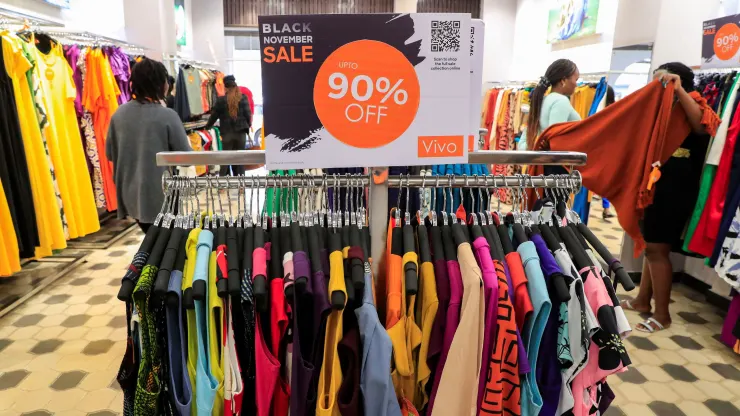Shoppers kicked off the holiday season with a bang, as a record 200.4 million people hit stores and searched websites for gifts from Thanksgiving Day through Cyber Monday, according to a survey by the National Retail Federation.
The turnout marks an all-time high since the major trade group and Prosper Insights & Analytics began tracking total in-store and online traffic in 2017. It topped last year’s figure of 196.7 million shoppers and the NRF’s forecast for about 182 million people during the five-day weekend.
The number of people shopping online rose to 134.2 million this year, up from 130.2 million a year ago, the NRF survey found. Consumers who shopped at stores fell slightly, from 122.7 million people in 2022 to 121.4 million people this year.
The major trade group did not estimate total spending, but said shoppers shelled out an average of $321.41 on holiday-related purchases over the weekend. That’s roughly in line with the $325.44 average last year. The number is not adjusted for inflation.
On a call with reporters, NRF CEO Matt Shay said the large turnout “speaks to the way consumers are feeling, but also the deals that were out there.” He said other factors including the weather worked in retailers’ favor. Cooler temperatures, which many parts of the country had this weekend, can help motivate shoppers to spring for seasonal items like jackets, sweaters and boots.
Top gifts during the period were clothes and accessories, which about half of those surveyed purchased, and toys, which nearly a third of people surveyed bought. For the first time, personal care or beauty items also cracked into the top five most popular gifts, the group said.
As of Thanksgiving weekend, consumers said they were about halfway done with their holiday shopping, according to the results. NRF’s survey of 3,498 adult consumers was conducted Nov. 22 to 26.
Another early read on holiday spending showed strength in online sales. On Black Friday, consumers spent $9.8 billion in U.S. online sales, according to Adobe, up 7.5% from a year ago.
Cyber Monday topped that, as e-commerce spending in the U.S. totaled $12.4 billion, up 9.6% year over year.
Adobe’s data covers more than 1 trillion visits to U.S. retail websites, 100 million unique items and 18 total product categories. It does not cover in-store purchases, where the majority of U.S. holiday spending still take place.
Yet it is too soon to predict how the rest of the peak retail season may play out. Strength in early shopping could reflect shoppers’ hunger for good deals rather than their desire to spend. It could also show a reversion to a pre-pandemic pattern of holiday shopping, when customers concentrated their spending during peak times like Black Friday sales events and the final days before Christmas.
Retailers struck a cautious note about the season when reporting earnings earlier this month. Some companies, including Walmart, say discretionary spending remains weak, but has picked up during promotional events.
Holiday sales in November and December are expected to rise by 3% to 4% year over year to between $957.3 billion and $966.6 billion, according to the NRF. That’s slower growth than during the pandemic, but roughly in line with average sales increases before Covid.
NRF’s Shay said sales this holiday season may look modest, or even disappointing, because of comparisons with the pandemic spending boom.
“There’s no question that there’s been some moderation and deceleration in consumption relative to the last 36 months,” he said. Shay referred to the end of stimulus checks and the return of higher spending on services.
But he, added, “there’s a difference between moderation and bleak” sales.

